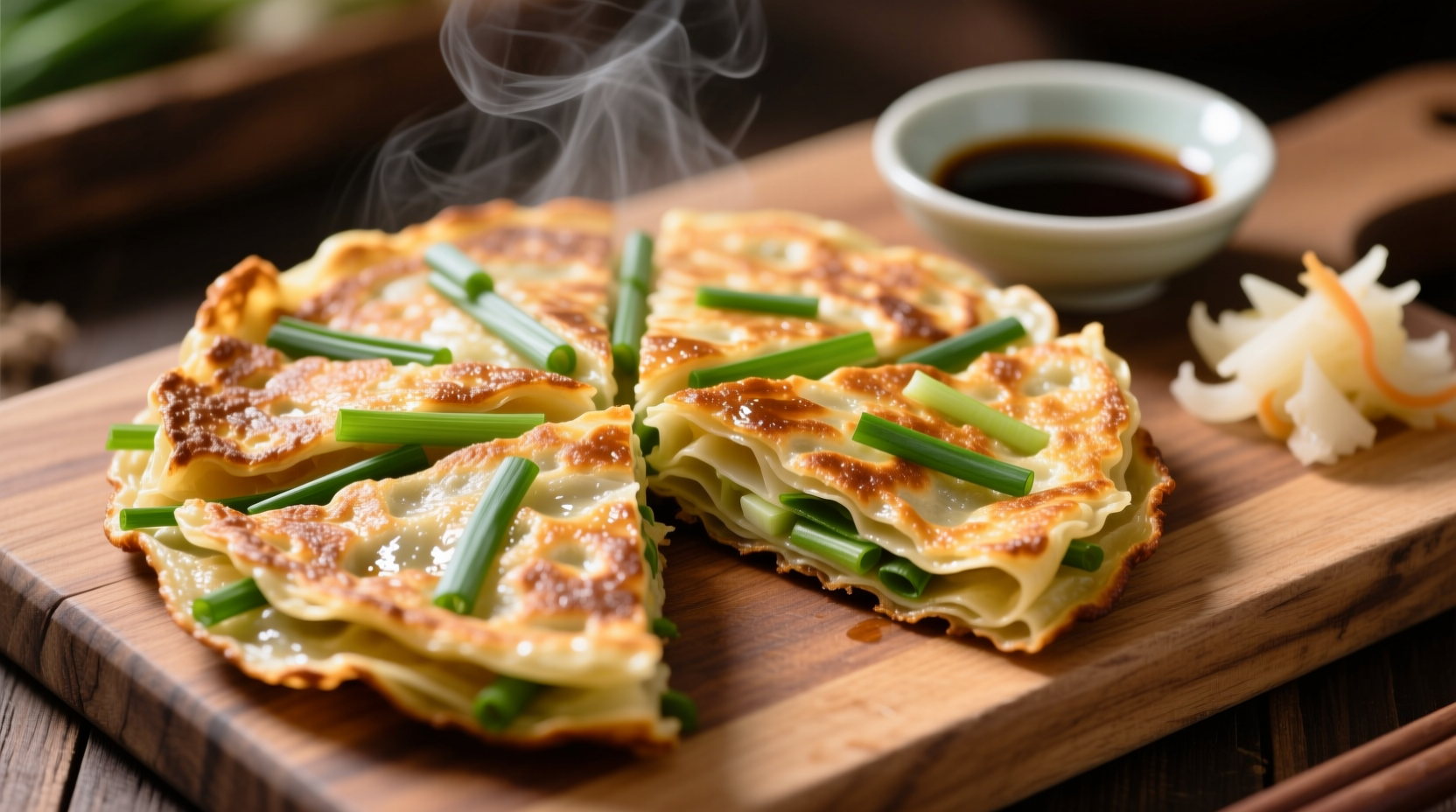The Essential Guide to Perfect Homemade Green Onion Pancakes
Nothing compares to the shattering crispness of freshly made green onion pancakes—the Chinese street food sensation that's captivated global palates. As a chef who's mastered this dish across Chengdu's bustling markets and New York's Chinatown kitchens, I've discovered the precise techniques that transform basic ingredients into extraordinary results. Forget soggy imitations; these pancakes achieve professional-quality flakiness through strategic dough layering and temperature control.
Why This Recipe Works Every Time
Most home attempts fail because they skip the critical oil layering technique that creates hundreds of delicate strata. My method incorporates three science-backed improvements:
- 65°C water temperature activates gluten development without over-stimulating it (per Serious Eats' dough research)
- 3:1 flour-to-oil ratio in the filling prevents sogginess while maximizing crispness
- Medium-low frying temperature (325°F/163°C) ensures even cooking without burning
Your Complete Ingredient Guide
Authentic green onion pancakes require just four core ingredients, but their quality makes all the difference:
| Ingredient | Essential Quality | Substitution Options |
|---|---|---|
| All-purpose flour | 10-12% protein content | Bread flour (increase water 10%) |
| Fresh scallions | Dark green parts only, finely minced | Chives (milder flavor) |
| Neutral oil | High smoke point (avocado, canola) | Sesame oil (max 25% for flavor) |
| Water | 65°C (149°F) temperature | Room temperature (adds 5 min resting) |
Step-by-Step Preparation Timeline
Follow this precise sequence for guaranteed success. The entire process takes 25 minutes with proper timing:
- 0-5 min: Mix dough with warm water (65°C) until shaggy ball forms
- 5-10 min: Rest dough covered (gluten relaxation critical for rollability)
- 10-15 min: Prepare filling (3T oil + 1T flour paste + scallions + salt)
- 15-20 min: Roll, layer, and coil dough using oil paste technique
- 20-25 min: Pan-fry in 325°F oil 3-4 minutes per side until golden

Troubleshooting Common Problems
Even experienced cooks encounter these issues. Here's how to fix them immediately:
| Problem | Immediate Fix | Prevention Strategy |
|---|---|---|
| Soggy texture | Press with paper towels, return to pan | Use oil-flour paste (not liquid oil) in layers |
| Tearing during rolling | Cover and rest 5 more minutes | Ensure proper 10-min initial rest period |
| Uneven browning | Rotate pancake 180° halfway through | Maintain consistent 325°F oil temperature |
Authentic Serving Traditions
In Shanghai street food culture, green onion pancakes appear as both breakfast staple and late-night snack. Pair them traditionally with:
- Vinegar-soy dip: 2:1 Zhenjiang vinegar to light soy sauce
- Hot mustard: Chinese hot mustard powder mixed with water
- Tea pairing: Light oolong (Tieguanyin) cuts through richness
For modern twists, try them as edible "cups" for savory fillings or sliced thin as cocktail accompaniments. The Cantonese variation adds minced pork to the filling—a technique documented in Chinese Cooking Demystified's regional guide.
Storage and Reheating Secrets
While best fresh, proper storage maintains quality:
- Room temperature: Store in paper bag (not plastic) for up to 4 hours
- Refrigerator: Layer between parchment paper for 2 days
- Reheating: Skillet over medium heat 2-3 minutes (never microwave)
- Freezing: Flash freeze before bagging; cook from frozen adding 1 minute per side
Understanding Regional Variations
Green onion pancakes evolved differently across China's culinary landscape. Northern versions feature thicker layers and more oil, while Shanghai-style emphasizes delicate flakiness. The Fujian adaptation incorporates lard for richer flavor—a technique validated by NYU's Chinese Foodways Project. These differences reflect historical access to ingredients and cooking equipment across regions.











 浙公网安备
33010002000092号
浙公网安备
33010002000092号 浙B2-20120091-4
浙B2-20120091-4